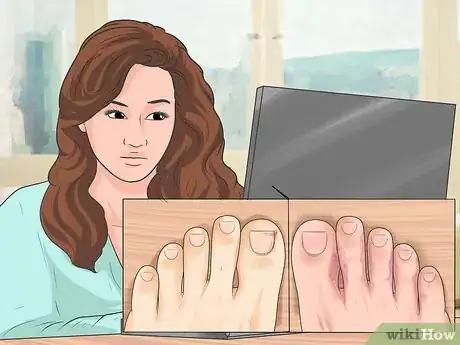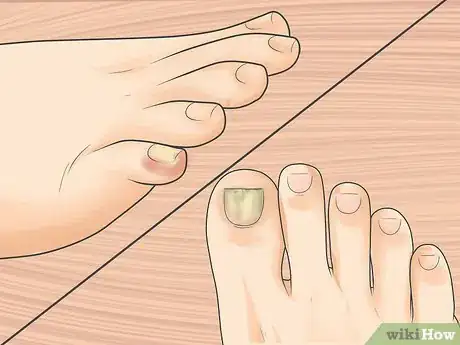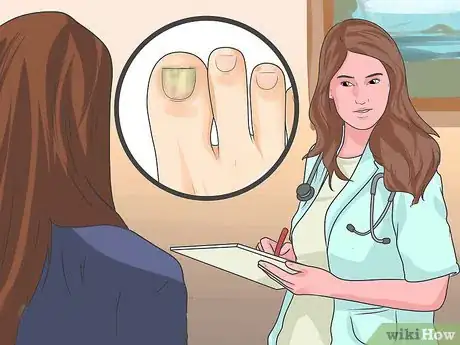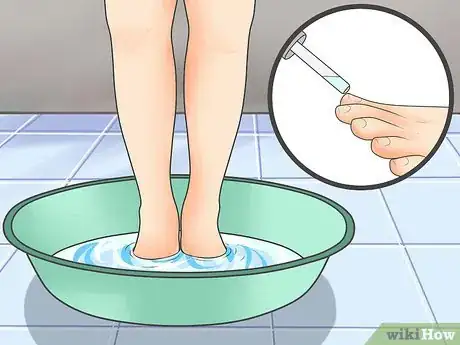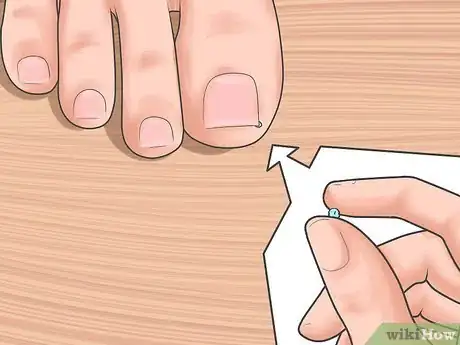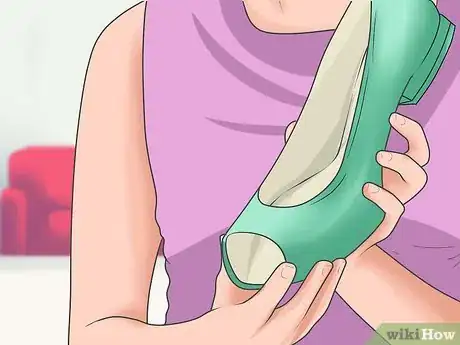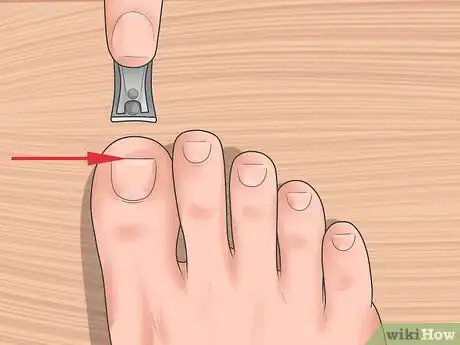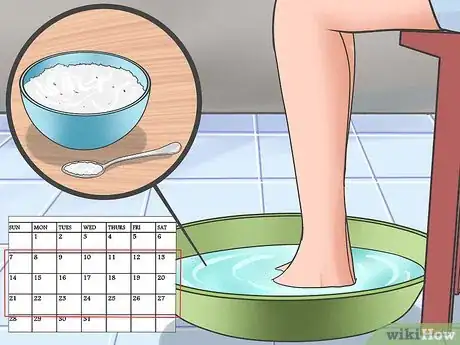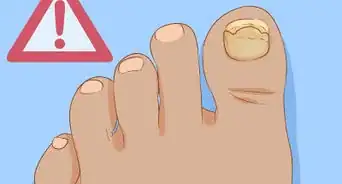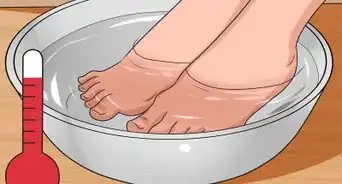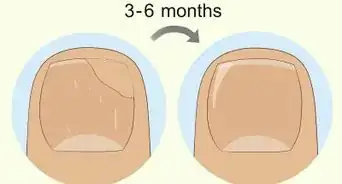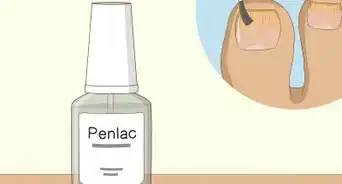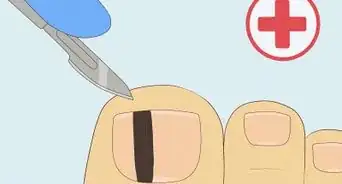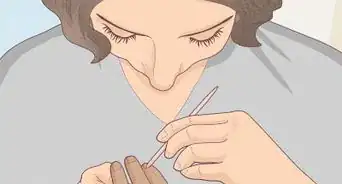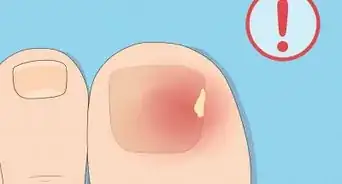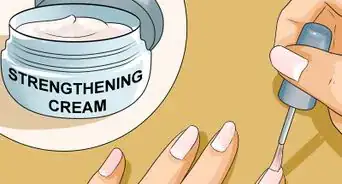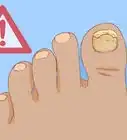This article was medically reviewed by Shari Forschen, NP, MA. Shari Forschen is a Registered Nurse at Sanford Health in North Dakota. Shari has worked in healthcare since 1996 and her expertise lies in acute care bedside nursing on a medical oncology floor. She received her degree from Medcenter one College of Nursing in 2003 and her Family Nurse Practitioner Masters from the University of North Dakota in 2014. Shari is a member of the American Nurses Association.
This article has been viewed 162,851 times.
Ingrown toenails are perhaps one of the most painful conditions caused by such a small part of your body. Ingrown toenails occur when one edge of your toenail grows and curves into the soft skin around your toe, resulting in pain, swelling, redness, and sometimes, an infection.[1] You may develop an ingrown toenail on the soft skin of the inner corner of your nail or on the outer corner of your nail.
Steps
Recognizing the Symptoms of an Ingrown Toenail
-
1Be aware of the difference between an ingrown toenail and foot fungus. Ingrown toenails are also known as onychocryptosis, and can be caused by stubbing your toe, wearing socks or shoes that are too tight, and cutting your toenails incorrectly. But ingrown toenails can also be caused by a toenail fungus called onychomycosis, which can then cause your toenail to grow abnormally and become ingrown.
- However, foot fungus like athlete's foot (tinea pedis) can cause your toenail to look discolored and become disfigured. Your toenail may appear spotted with white pits, there may be yellow debris under your toenail, or your toenail may appear chalky and irregularly shaped.
- Another foot condition that causes nail disfigurement is the development of eczema or psoriasis on your nails. If you have this skin disorder, your nail may start to peel or split and appear thicker or begin to ripple. Your doctor can run a test to determine if you have a skin disorder that is causing toenail disfigurement.
- If your toenail turns black, this may be due to trauma where you dropped something heavy on the nail. But it can also be due to melanoma or skin cancer. If your toenail turns black without any trauma inflicted on it, you should see your doctor right away.
-
2Look closely at your toe. Notice if the skin of your toe is reddened with some tenderness and swelling, especially around the sides of your toenail. You may also see some drainage of a yellowish fluid, which may be an early sign of infection or a sign of inflammation, which is your body reacting to the irritation of the toenail.[2]Advertisement
-
3Examine your toenail and determine if it's painful. There may be swelling and redness around an area of your toenail, as well as pain and tenderness. You may notice that the skin around the corner of your toenail may be harder than the skin around your other toes. Your toenail may also curve into the skin in the corner of your toe or disappear into the skin.[3]
- If there is a yellowish discharge from your nail, your toenail may be crusty around this area.
-
4Check for signs of an infection. Ingrown toenails can become worse until they get infected or you may try to treat an ingrown toenail at home and cause the toenail to become infected. You can determine if the ingrown toenail is infected by noticing if:[4]
- The toenail feels increasingly painful, and very tender and swollen
- There is pus or yellow discharge visible under the skin or the nail
- The skin or the nail feel very warm to the touch
- Redness which streaks or begins to spread to your other toes
-
5Get medical attention if the toenail becomes infected. If you suspect the toenail has become infected or if you have diabetes or another condition in which circulation is limited in your feet, you should see your doctor.
- Your doctor may try to lift the ingrown nail and insert a piece of cotton underneath to help the nail grow over the skin. Your doctor may then instruct you to soak the toe every day and replace the cotton so the nail stays clean and grows properly.
- Another option may be to remove part of the nail while you are under local anesthesia. If you have recurring ingrown toenails, you may need surgery to remove an entire section of the nail.
Treating an Ingrown Toenail at Home
-
1Soak your foot in warm water. This can help to prevent an infection and soften the ingrown toenail. Then, put two drops of tea tree oil on the nail.[5] [6]
- Let the tea tree soak in and then finish with a dab of Vick's VapoRub or Mentholatum on the ingrown toenail. The menthol and the camphor will help to reduce the pain and soften the nail further.
- Apply a bandage or a small piece of gauze to keep the menthol and camphor on the toenail.
-
2Use a small piece of cotton to lift the ingrown. The following day, soak your toe again for 20 minutes and then take out a small piece of cotton. Roll it between your fingers so it makes a ½ inch long cotton “tube.”[7] [8]
- Use clean hands to tape one end of the cotton tube to the top of your toe and then lift the corner of the ingrown toenail up and out with one finger. Use your other finger to work the free end of the cotton tube under the nail and then out the other side. The cotton should sit between the skin and the nail.
- Keep in mind this process can be painful. You may need to ask someone else for assistance to help you slide the cotton tube under the corner of the nail.
-
3Replace the cotton every day after soaking your foot. Make sure you also apply tea tree oil and the menthol-camphor ointment to keep your toenail soft and to prevent infection. You can also put some tea tree oil on the cotton tube.[9] [10]
- Avoid using nail files, tweezers, or nail cutters, as these can break or damage the skin. This can then lead to an infection.
- Wear white cotton socks and keep your feet clean. Colored dyes on socks can get into your nail and lead to more inflammation.
Preventing Ingrown Toenails
-
1Wear open-toed shoes. Go for comfortable shoes with no heel or a low heel. If you work in an environment where your toes could be injured, wear protective shoes.
-
2Cut your toenails straight across. Do not cut your toenails to follow the line of your toes, as this can lead to ingrown toenails. Try not to cut them too short or leave them too long.
-
3Soak your feet two to three times a week. Do this in warm water for 10 – 15 minutes. This will help to soften your toenails and make them more flexible. It will also make it easier to lift the edge of your toenail over the skin so they do not grow into your skin and become ingrown.
- Add two tablespoons of Epsom salts to your foot bath or soak them in Domeboro Astringent solution, which can be found at more drugstores.
References
- ↑ http://www.mayoclinic.org/diseases-conditions/ingrown-toenails/basics/definition/con-20019655
- ↑ http://emedicine.medscape.com/article/909807-clinical#showall
- ↑ http://emedicine.medscape.com/article/909807-clinical#showall
- ↑ http://emedicine.medscape.com/article/909807-clinical#showall
- ↑ http://www.healthyandnaturalworld.com/home-remedies-to-get-rid-of-ingrown-toenails/
- ↑ http://www.mayoclinic.org/diseases-conditions/ingrown-toenails/basics/treatment/con-20019655
- ↑ http://www.healthyandnaturalworld.com/home-remedies-to-get-rid-of-ingrown-toenails/
- ↑ http://www.mayoclinic.org/diseases-conditions/ingrown-toenails/basics/treatment/con-20019655
- ↑ http://www.healthyandnaturalworld.com/home-remedies-to-get-rid-of-ingrown-toenails/
About This Article
If you think you might have an ingrown toenail, look at your toe and make note of any redness or swelling around the nail edges, which are signs of an ingrown nail. Also, if you notice the skin around your toenail is hardened or if your nail curves into the corner of your toe, you probably have an ingrown toenail. You should also be mindful of any pain in your toes, or yellowish discharge from your nail, since these things are signs of infection and might require a doctor’s visit. For tips from our Nurse reviewer on how to treat an ingrown toenail at home, read on!
